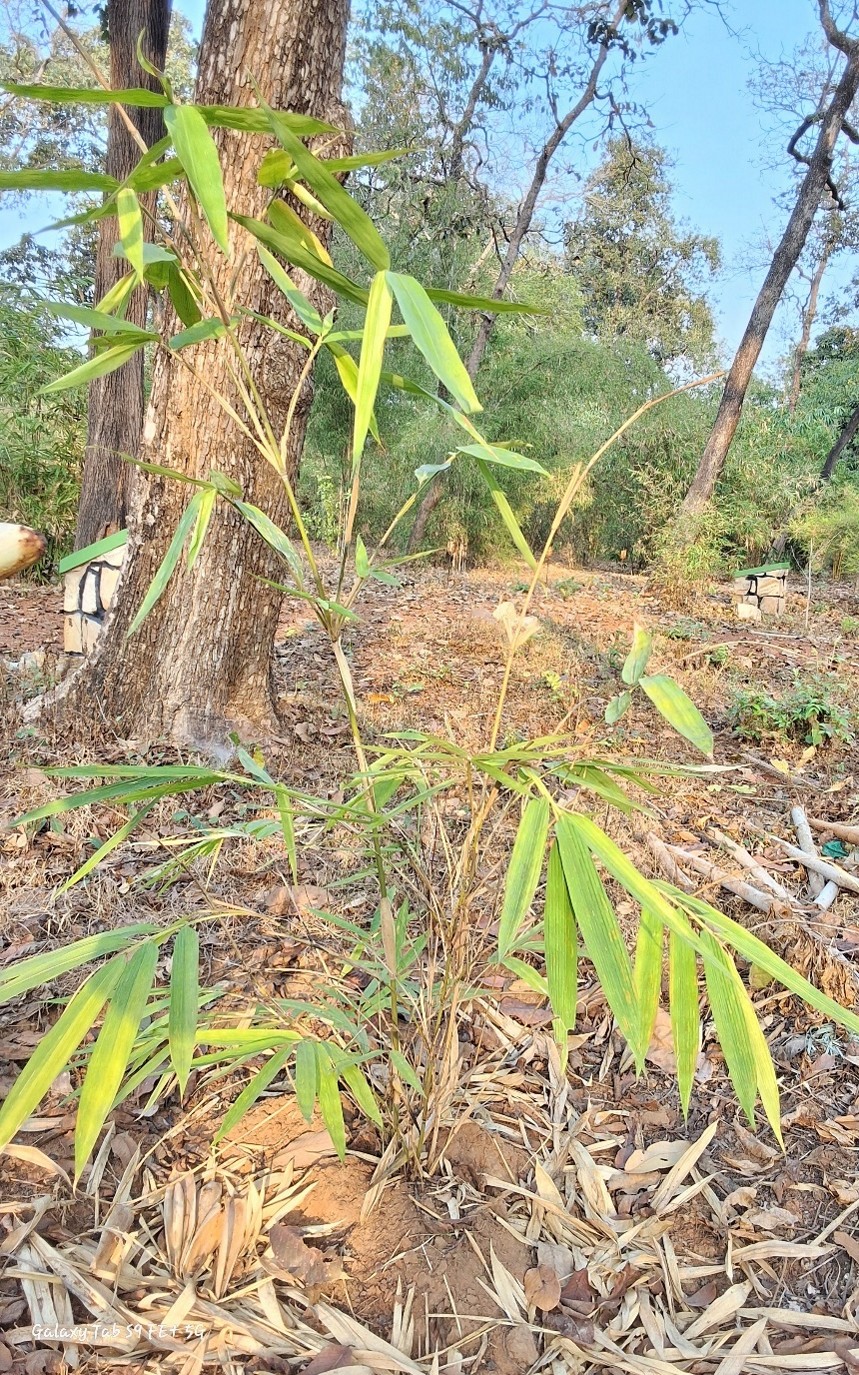Pseudoxytenanthera ritcheyi

Pseudoxytenanthera ritcheyi
Pseudoxytenanthera ritcheyi commonly known as Ritchie's Bamboo in English, is also called Ritchie Bans in Hindi and Ritchie Paalai in Tamil. Native to Southeast Asia, including India and parts of Myanmar, it has been introduced to other tropical regions for cultivation and commercial use.
Pseudoxytenanthera ritcheyi is a clumping, dense, and non-invasive bamboo that grows to a height of 8 to 12 meters with a diameter of 6 to 10 cm. The culms are pale green to yellowish-green in color, with internodes measuring 20 to 35 cm. The culm sheath is light green when young and deciduous, with the adaxial surface being glabrous and the abaxial surface covered with fine light brown hairs. The margins of the culm sheath are ciliate.
The leaves of Pseudoxytenanthera ritcheyi are lanceolate and narrow, ranging from 18 to 30 cm in length and 2.5 to 5 cm in breadth. The glossy green leaves are stiff and have distinct veins, contributing to the bamboo's ornamental appeal.
This bamboo species prefers low to moderate altitudes, up to 800 meters, and thrives in well-drained, fertile soils such as loamy and sandy loam. It tolerates slightly acidic to neutral pH levels, making it adaptable to a variety of soil types.
The inflorescence of Pseudoxytenanthera ritcheyi consists of small, branched panicles. The flowering glumes are yellow to brownish in color, with bracteate heads. The stamens are 3 to 5, exserted from the flower and visible with long anthers. Pseudoxytenanthera ritcheyi flowers irregularly, typically every 30 to 50 years. Flowering is rarely reported and is mostly observed in the regions of its origin. The seeds are small, lightweight, and dispersed by wind, although seed germination is slow and requires specific conditions.
Pseudoxytenanthera ritcheyi is best propagated through culm cuttings, which are the most common method of propagation. It can also be propagated by clump division, where mature clumps are divided into smaller sections. Propagation by seed is rare due to irregular flowering, and seed germination is slow.
This bamboo is widely used for crafts, including traditional items like baskets, mats, and furniture. It is also valuable in construction, particularly for lightweight applications such as scaffolding, fences, and small buildings. Pseudoxytenanthera ritcheyi is cultivated for ornamental purposes in gardens and landscapes, where its attractive foliage enhances the visual appeal. Additionally, this bamboo is effective for erosion control, particularly in preventing soil erosion along slopes and riverbanks, where it stabilizes the soil with its dense root system.
In summary, Pseudoxytenanthera ritcheyi is a versatile bamboo species, ideal for crafts, construction, ornamental purposes, and erosion control. It is easily propagated through culm cuttings and clump division but rarely propagated by seed due to its irregular flowering cycle.
Listen Audio:
Need assistance? BRTC Faculty